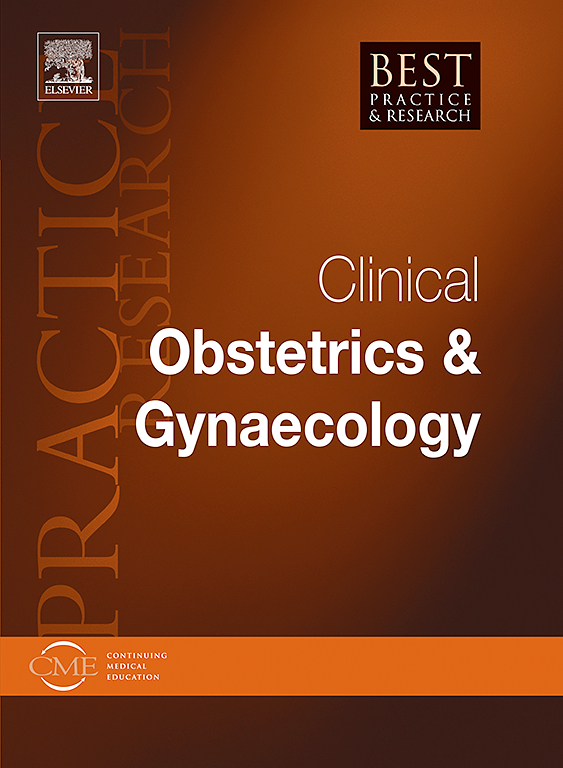Second trimester echocardiography
IF 4.1
2区 医学
Q1 OBSTETRICS & GYNECOLOGY
Best Practice & Research Clinical Obstetrics & Gynaecology
Pub Date : 2025-03-19
DOI:10.1016/j.bpobgyn.2025.102592
引用次数: 0
Abstract
Fetal echocardiography involves a comprehensive cardiac assessment aiming to make a complete structural examination of the heart as well as to detect signs of cardiovascular adaptation to different insults. For the former, this assessment entails expert's evaluation of the anatomy of the heart including additional views beyond the five axial views used in cardiac screening examinations and always complemented with colour and pulsed Doppler. Echocardiography may accurately diagnose most congenital heart defects in fetal life, which enables adjusting the perinatal management. For the latter, echocardiography encompasses cardiac morphometric assessment to identify signs of cardiac remodeling indicative of cardiac adaptation in structure, shape, and size in response to underlying diseases, and cardiac functional assessment to detect signs of systolic and/or diastolic dysfunction. The most used parameters to study the systolic function (stroke volume, cardiac output, ejection fraction, fractional shortening, and mitral and tricuspid annular plane systolic excursion), diastolic function (characteristics of flow in the precordial veins and through the atrioventricular valves) and global myocardial function (myocardial performance index) will be discussed in this review.
妊娠中期超声心动图
胎儿超声心动图包括全面的心脏评估,旨在对心脏进行完整的结构检查,并检测心血管适应不同损伤的迹象。对于前者,这种评估需要专家对心脏解剖的评估,包括在心脏筛查检查中使用的五轴位视图之外的额外视图,并且总是辅以彩色和脉冲多普勒。超声心动图可以准确诊断胎儿期大多数先天性心脏缺陷,从而调整围产期管理。对于后者,超声心动图包括心脏形态测量评估,以识别心脏重构的迹象,表明心脏在结构、形状和大小上对潜在疾病的适应,以及心脏功能评估,以检测收缩和/或舒张功能障碍的迹象。研究收缩功能最常用的参数(每搏容量、心输出量、射血分数、缩短分数、二尖瓣和三尖瓣环形平面收缩偏移)、舒张功能(心前静脉和房室瓣膜的血流特征)和整体心肌功能(心肌性能指数)将在本文中进行讨论。
本文章由计算机程序翻译,如有差异,请以英文原文为准。
求助全文
约1分钟内获得全文
求助全文
来源期刊
CiteScore
9.40
自引率
1.80%
发文量
113
审稿时长
54 days
期刊介绍:
In practical paperback format, each 200 page topic-based issue of Best Practice & Research Clinical Obstetrics & Gynaecology will provide a comprehensive review of current clinical practice and thinking within the specialties of obstetrics and gynaecology.
All chapters take the form of practical, evidence-based reviews that seek to address key clinical issues of diagnosis, treatment and patient management.
Each issue follows a problem-orientated approach that focuses on the key questions to be addressed, clearly defining what is known and not known. Management will be described in practical terms so that it can be applied to the individual patient.

 求助内容:
求助内容: 应助结果提醒方式:
应助结果提醒方式:


